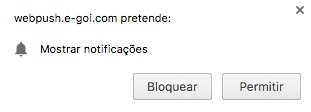Do you know that itchy feeling we get to peek at our smartphones whenever we receive an SMS? We can’t resist the urge! Well, the SMS has a new ally: push notifications.
Contents
What are Push Notifications?
Push notifications are messages sent by the Push Notification Service to a mobile APP (smartphone or tablet) or directly in your browser.
An app user can receive notifications of new messages, exclusive promotions, invitations, proximity alerts, comments on our publications or our comments on other publications. And we can receive them even when we are not using the app.
Push Notifications vs SMS: Unlike SMS, push notifications can only be sent to users who have installed your app. Whenever a notification is sent, messages appear highlighted on tablets and smartphones (iOS, Android and Windows Mobile) and notifications can also be personalized (character/line limits and format), depending on the operating system (iOS, Android, Windows).
Web Push Notifications
You must have already noticed, especially on content producing websites such as online newspapers or blog publications, in pop-ups on your browser, such as this:
Here at E-goi’s blog, we already use our own system of web push, one which we developed ourselves. On an email, it would be the opt-in, or in other words, your authorization for providing your personal information is obtained through the registration form, for web push the opt-in is done as follows:
These notifications are sent via your browser (Chrome or Firefox). Even whilst performing other tasks, you will still receive these notifications when you access your browser.
Usage possibilities via app or browser
- # Keep users updated with your content: Whenever a new article is published, for example;
- # Send a reminder: Imagine you are organizing an event. You could quite easily remind those registered about the date of the event;
- # Increase your sales: And what if you sent a push notification to the user who left a product in an abandoned shopping basket?
- # Improve the experience and gain customer loyalty.
- # Convert app users into clients
Push Notifications vs Email: Unlike emails, push notifications DO NOT end up in the spam folder, or get forgotten in the inbox – and (what’s more) their opening rate is twice that of emails.
They also remind users to make use of your app. How many times have you installed apps, never used them again and had even forgotten they existed? Exactly, these notifications can be very efficient communication channel for your business.
Conclusion
We should treat direct communication with our app users, via push notifications, as a privilege. Not as a right. And the same rules that we use for emails should also apply to push notifications.
Messages must be useful, relevant and appropriate for each user’s context. Otherwise, we will sabotage this power: users will become annoyed, ignore/disable our push notifications, or even uninstall our apps! In other words, use them, but with moderation!
Are you ready to start sending push notifications?

